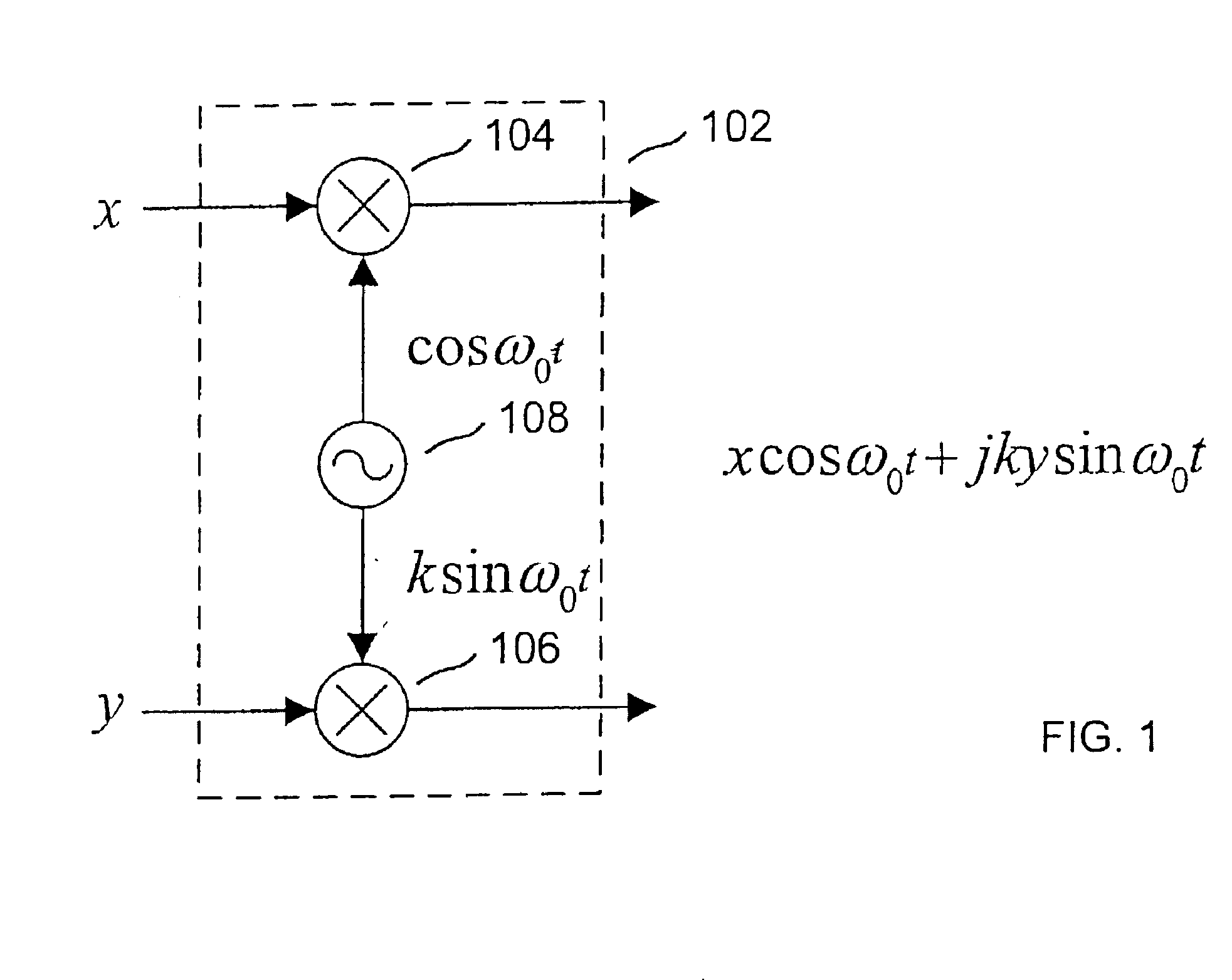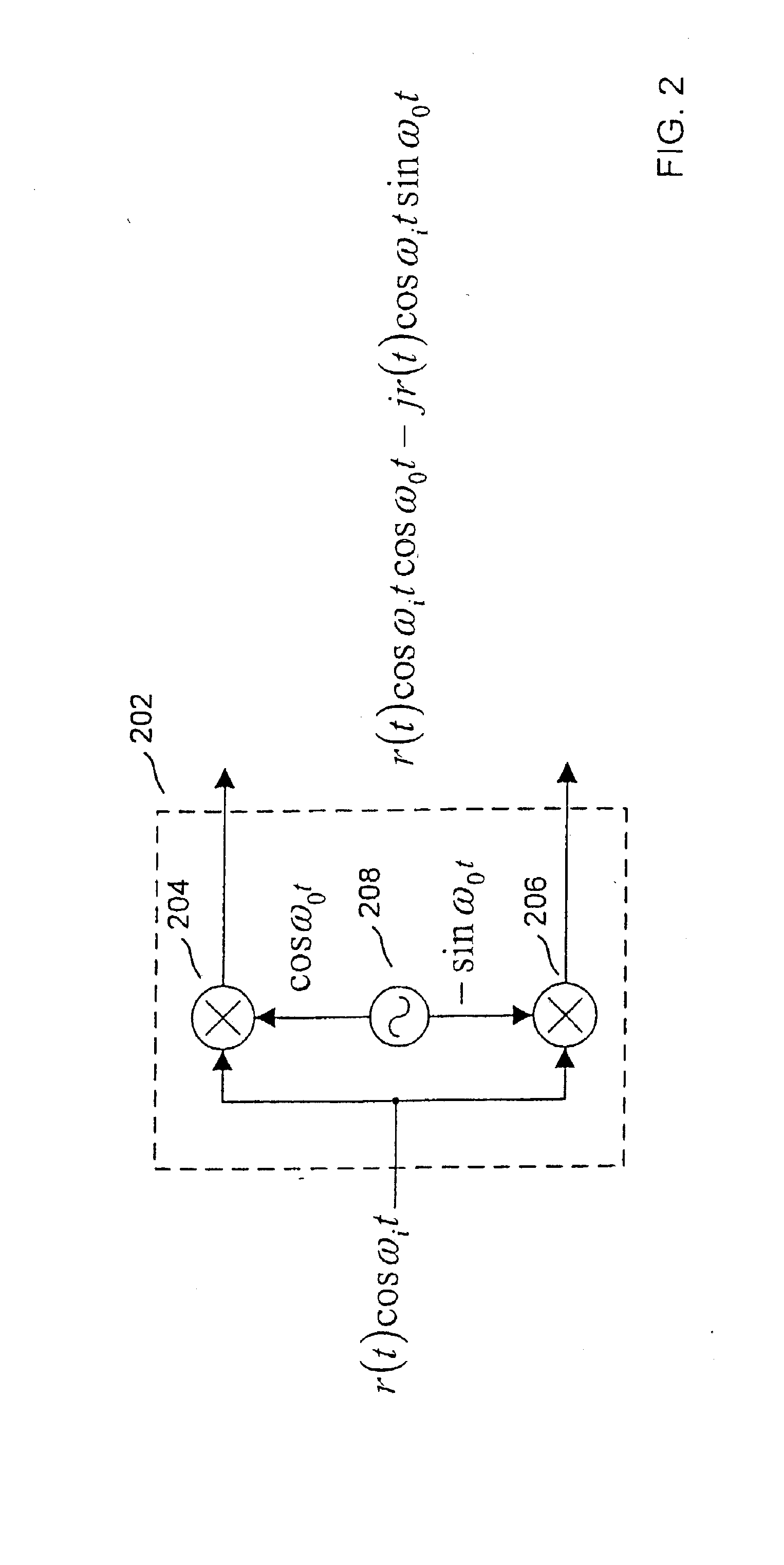Compensation of i-q imbalance in digital transceivers
a digital transceiver and imbalance technology, applied in the field of digital transceivers, can solve problems such as imbalances in transmitter and receiver, inability to generate a perfect complex sinusoid using analog circuits, and problems such as distortion of transmitter and receiver
- Summary
- Abstract
- Description
- Claims
- Application Information
AI Technical Summary
Benefits of technology
Problems solved by technology
Method used
Image
Examples
Embodiment Construction
[0079] Embodiments of the present invention reduce I-Q imbalances through compensation using systems and methods that may be implemented with low-complexity and low-cost using existing IC technologies. Moreover, because the present invention lends well to a digital implementation, it may be easily integrated with the existing digital processing that occurs in a RF radio system in one of several possible ways. Non-limiting examples of possible implementations of embodiments of the present invention are shown in FIGS. 6A, 6B and 6C. A two chip solution is shown in FIG. 6A where the compensation is part of a mixed-signal chip that interfaces to the RF with analog-to-digital converters (ADC) and digital-to-analog converters (DAC). The digital function performs modem and medium access (MAC) processing. Another approach is shown in FIG. 6B where the compensation is part of the RF front-end with a general programmable digital interface bus, that may be serial, parallel, or a mixture of bot...
PUM
 Login to View More
Login to View More Abstract
Description
Claims
Application Information
 Login to View More
Login to View More - R&D
- Intellectual Property
- Life Sciences
- Materials
- Tech Scout
- Unparalleled Data Quality
- Higher Quality Content
- 60% Fewer Hallucinations
Browse by: Latest US Patents, China's latest patents, Technical Efficacy Thesaurus, Application Domain, Technology Topic, Popular Technical Reports.
© 2025 PatSnap. All rights reserved.Legal|Privacy policy|Modern Slavery Act Transparency Statement|Sitemap|About US| Contact US: help@patsnap.com



